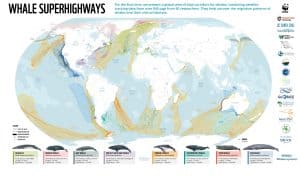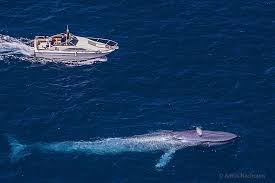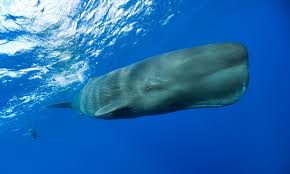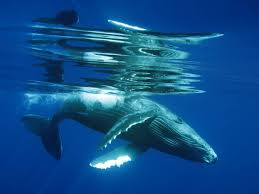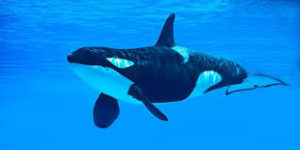Whale Distribution
Whales can be found in all the worlds oceans. There are 90 known species of whale 14 Baleen whales including Blue, Fin, Bryde's, Right whales, Bow Head, Humpback, Sei, Grey and Minke. All are migratory except the Bow Head which remains in the Arctic year round. There are 76 toothed whale including Sperm whale , Orca, Pilot whales , Beluga, Nahrwhals and all dolphins. We have picked some of the more familiar and tried to follow their migration patterns.
Click on the links above to learn more.
Evolution of Whales
The ancestors of whales Pakicetus a land roaming four legged relative of even toed ungulates (artiodactyls) such as the cow, the pig, the camel, the giraffe and the hippopotamus first appeared about 50 million years ago in the area that is now the Indus Valley , back then India was attaching itself to Asia and starting to push up the Himalayas. It was considered a cetacean because of the morphology of its inner ear. The shape of its teeth suggests that Pakicetus was carnivorous, like modern-day whales.It is believed that the descendants of the first land-roaming cetaceans increasingly gravitated to an aquatic environment, in some cases to seek refuge from danger – just like today’s water chevrotain – or to feed.
The four legged swimming whale close relative to hippopotamus managed to spread around the world, some fossils from 40 million years ago are found in Peru.
About 34 million years ago whales split into Baleen whales and toothed whales of today and developed echolocation.
Fifteen million years ago, another rapid diversification of cetacean species occurred, as ocean cooling changed the currents. At the same time, the number of mollusk and crustacean species consumed by some whales also increased.
Whales are believed to have reached the size we know today only about 4.5 million years ago. The sudden growth of mysticetes coincides with the cooling of the climate and the formation of large ice caps in the northern hemisphere. In spring and summer, ice-trapped nutrients are released into open water and accumulate near the coasts. Driven by currents, plankton accumulate in these areas and grow substantially when they come into contact with nutrient-rich waters. Plankton – until then widely dispersed in the ocean – begin to form seasonal concentrations, sometimes separated by thousands of kilometres.
Genes linked to feeding, including those responsible for saliva production or those that code for the reabsorption of sodium by the kidneys, have disappeared because they have become useless to whales which, with a few exceptions, live in saltwater environments. Their lives at sea make the lubrication of food unnecessary and sodium deficiency virtually impossible.
As for rest, this activity in whales is influenced by the loss of the gene responsible for the production of melatonin, a well-known hormone that regulates the sleep cycle. This adaptation is probably due to the fact that in cetaceans, breathing is a voluntary activity and falling into a deep slumber would likely increase the risk of drowning in these marine mammals.
Other genes that have disappeared in cetaceans are those that are useful to terrestrial animals but which cause problems during diving due to the extreme pressures their bodies are subject to. Researchers have notably observed the disappearance of genes that facilitate blood clotting and those associated with fibrosis and other lung issues in some humans. Another gene that indirectly increased the risk of DNA mutations in diving cetaceans has also vanished from their genetic makeup.

